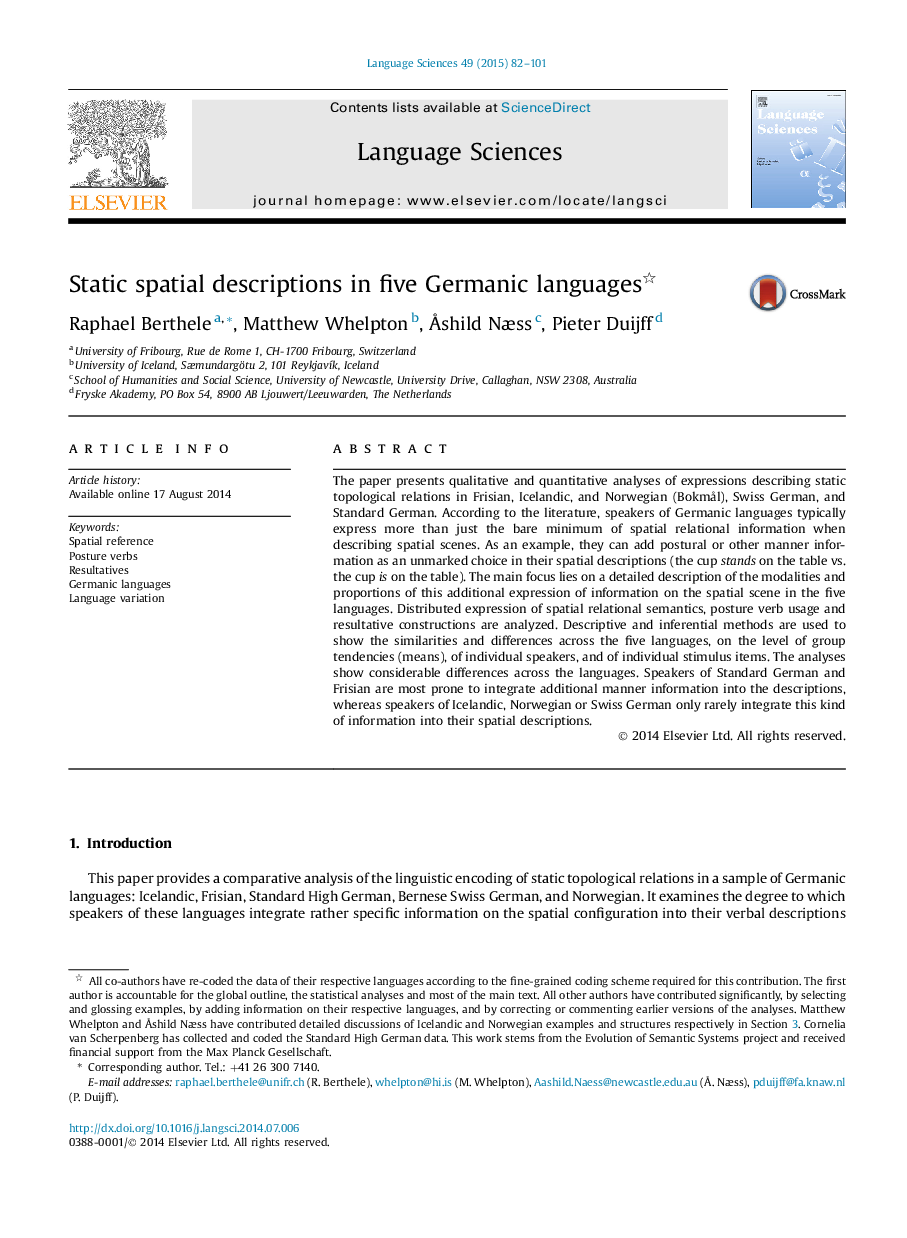| Article ID | Journal | Published Year | Pages | File Type |
|---|---|---|---|---|
| 1103056 | Language Sciences | 2015 | 20 Pages |
•There are striking differences within the family of Germanic languages regarding the way speakers describe static spatial scenes.•Smaller languages tend to express fewer elements describing accessory information of spatial scenes (e.g. posture).•Speakers of Standard German and Frisian favor the coding of manner co-event information.•Speakers of Icelandic favor the coding of spatial orientation information with complex prepositional constructions.
The paper presents qualitative and quantitative analyses of expressions describing static topological relations in Frisian, Icelandic, and Norwegian (Bokmål), Swiss German, and Standard German. According to the literature, speakers of Germanic languages typically express more than just the bare minimum of spatial relational information when describing spatial scenes. As an example, they can add postural or other manner information as an unmarked choice in their spatial descriptions (the cup stands on the table vs. the cup is on the table). The main focus lies on a detailed description of the modalities and proportions of this additional expression of information on the spatial scene in the five languages. Distributed expression of spatial relational semantics, posture verb usage and resultative constructions are analyzed. Descriptive and inferential methods are used to show the similarities and differences across the five languages, on the level of group tendencies (means), of individual speakers, and of individual stimulus items. The analyses show considerable differences across the languages. Speakers of Standard German and Frisian are most prone to integrate additional manner information into the descriptions, whereas speakers of Icelandic, Norwegian or Swiss German only rarely integrate this kind of information into their spatial descriptions.
